
Renewable energy specialist James Miller finds reasons to be cheerful as the demise of the fossil fuel industry looms into view.
We’re bombarded daily with doom-laden stories about climate breakdown and natural disasters that threaten our very existence on this planet, and many devastating aspects of climate change are already inevitable. But emerging from the darkness are very clear reasons to be optimistic about the future. They represent not only our best hope, but our only hope to eliminate carbon emissions, keep temperature rises below 1.5C and start repairing the damage already done. But these reasons are not widely understood, and those pointing to them are sometimes even actively denounced by environmentalists. So what are they?
We’re in the early stages of a zero carbon industrial revolution which is already proving to be the most rapid and consequential technological shift the world has ever seen. The growth of wind, solar, energy storage, and electric vehicles (EVs) has become exponential and the disruption of industrial agriculture via precision fermentation (which produces protein) and lab-grown meat is imminent.
Energy, transport and agriculture account for over 90 per cent of global carbon emissions and we now have a very clear pathway to eliminate them entirely and to start reducing atmospheric CO2 levels by the mid to late 2030s. Here’s a snapshot of what’s happening.
Solar and wind power accounted for 75 per cent of new electricity generation capacity globally in 2021 and investment in clean energy has overtaken total investment in the fossil fuel industry. It is likely that carbon emissions from electricity generation peaked last year and China, the world’s largest polluter, looks set to reach peak carbon emissions this year, seven years ahead of schedule. The non-profit organisation, Climate Analytics, estimates that a capacity of 1.5 terawatts (TW) of wind and solar energy needs to be constructed by 2030 to avoid 1.5C temperature rises; current trends show the world is on track to install 6TW by then.
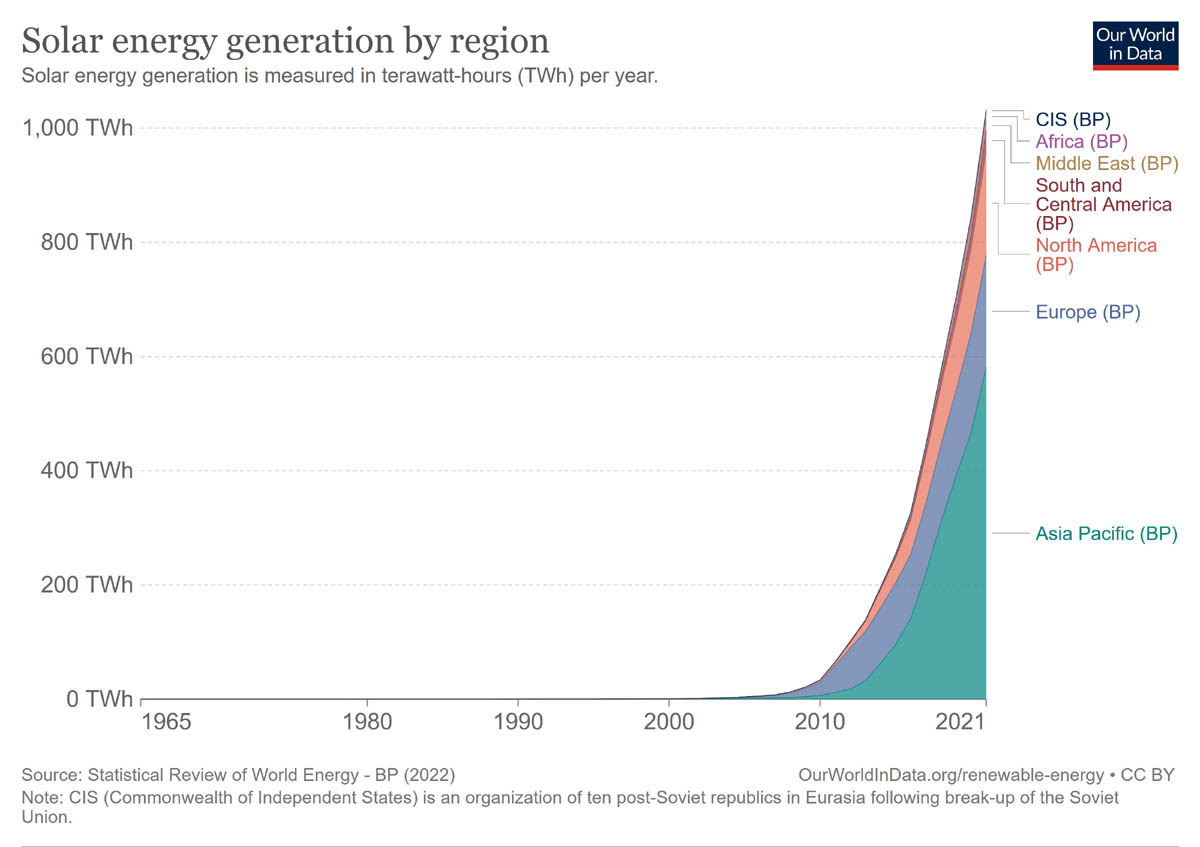
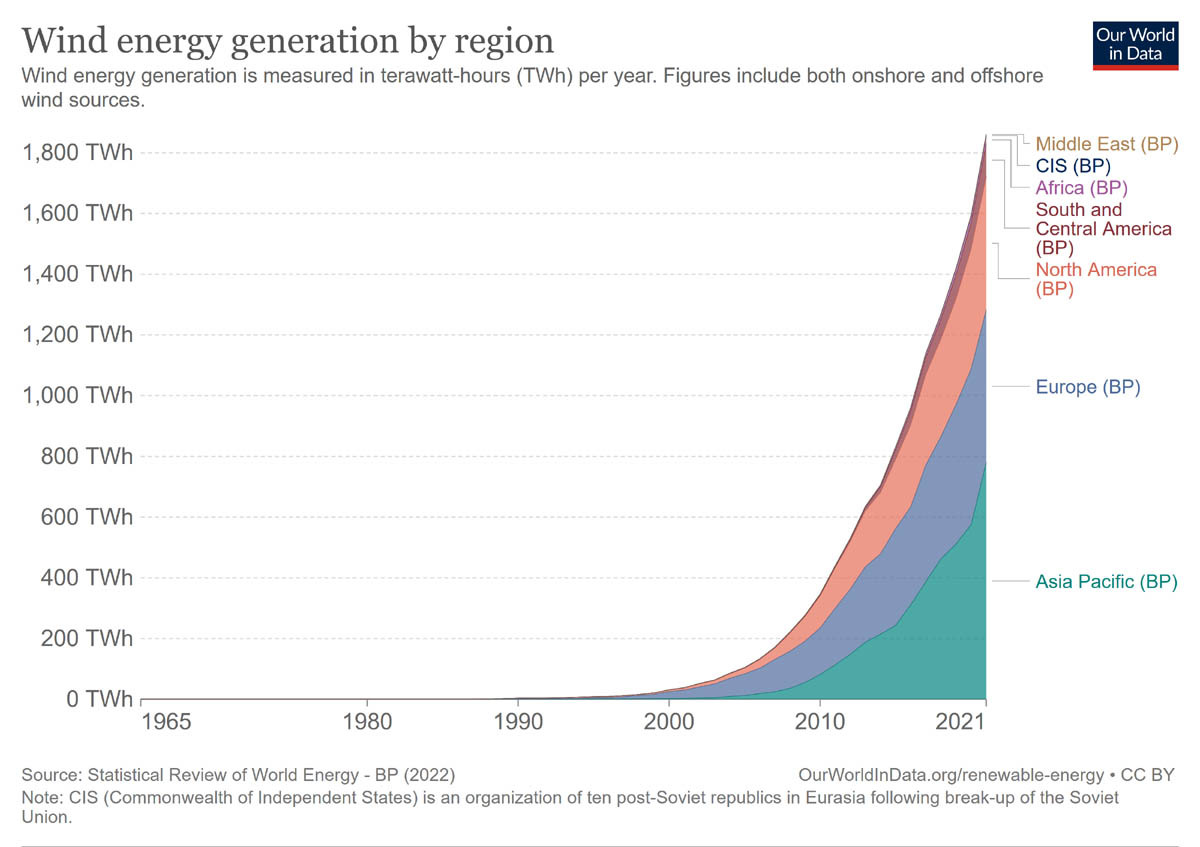
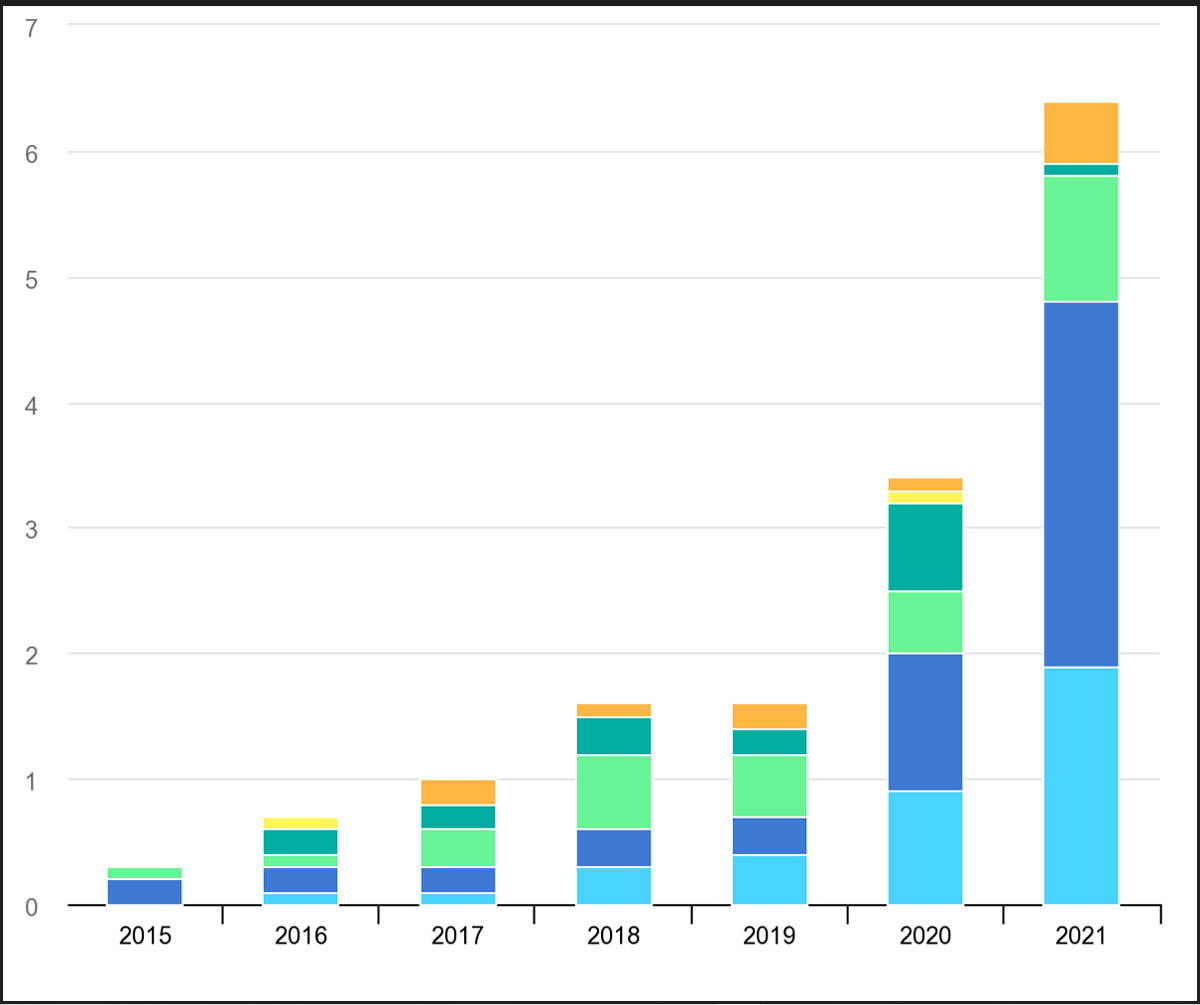
Electric vehicle (EV) numbers are also exploding. The carbon saving from displacing oil is second only to displacing coal and EVs are far less polluting than petrol and diesel cars over their lifetime. This is why electric vehicles are so important in the low carbon transformation. EVs have already displaced 1.5 million barrels of oil production per day. At 2 million barrels per day, oil price shocks become likely and the demise of the oil industry becomes all but inevitable.
Meanwhile, electric autonomous cars are already here and the financial and social benefits they offer are potentially huge. The scope for using these vehicles as an on-demand service, reducing the need to actually own a car, could help make it possible for all new cars to be electric by 2030 and total car numbers to plummet by 90 per cent.
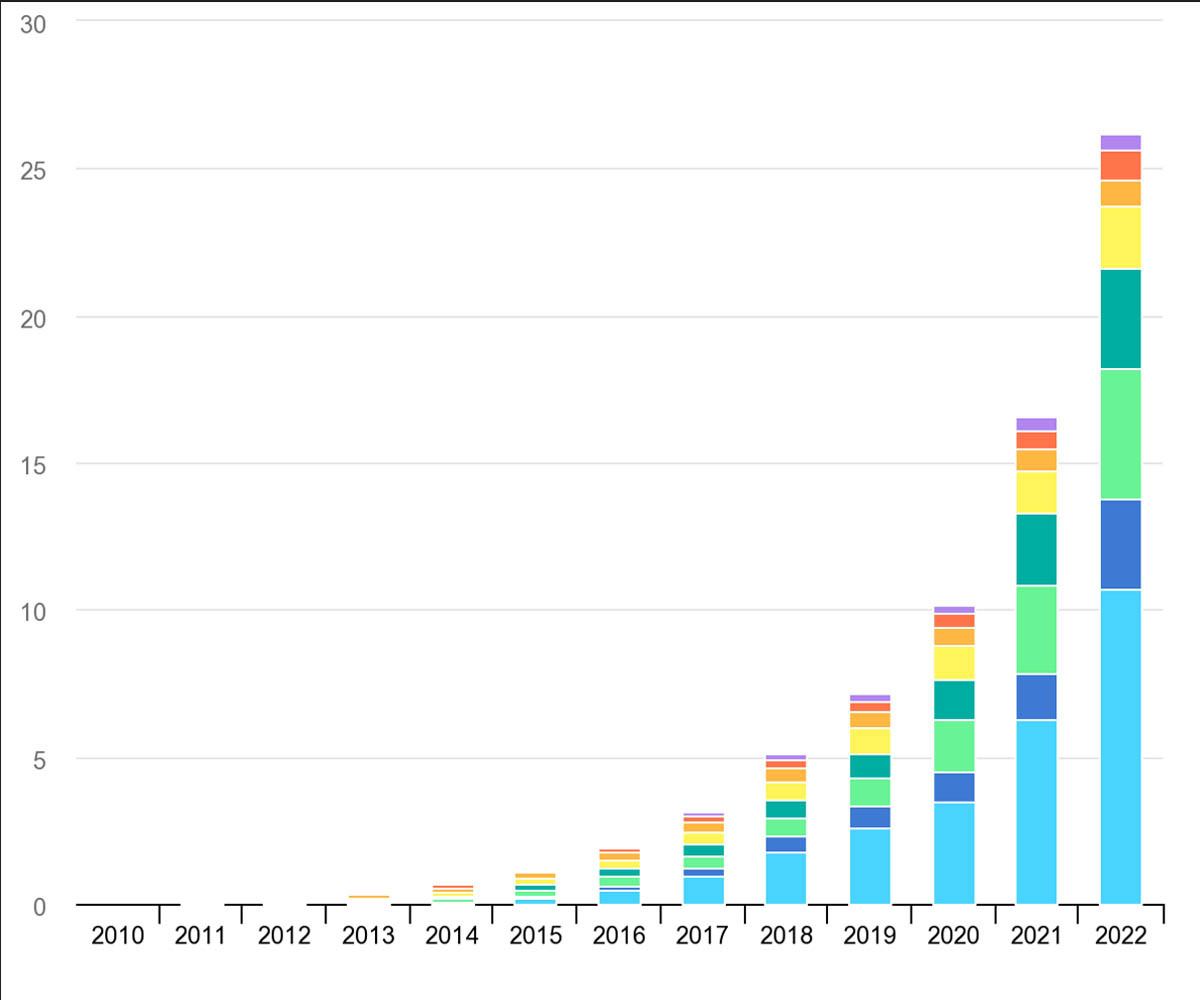
Americans could save up to 10 per cent of their income by switching from car ownership to ‘transport as a service’ EVs and this holds out great promise in the UK too, where the average British car owner is in transport poverty. The independent think tank, RethinkX, predicts that using autonomous EVs will be ten times cheaper than private car ownership, and there are no known examples where disruption has not occurred at this cost differential. It’s just a matter of time until the final regulatory hurdles are overcome.
The end of agriculture as we know it has begun, as the costs of precision fermentation and lab-grown meat plummet, investment pours in and regulation adapts. George Monbiot describes precision fermentation as possibly the most important green technology ever because it can provide protein with clean energy and uses only a tiny fraction of the land area and resources compared with current industrial farming.
Meat production and the land required to grow animal feed covers 77 per cent of the world’s agricultural land – 25 per cent of total land area or 3.7 billion hectares – an area greater than America, Australia, China, India and the EU combined. Rewilding this land, along with the oceans, would allow nature recovery to begin and reforestation to start capturing atmospheric carbon, so reducing this to safer levels. The fact that over 70 billion animals are slaughtered every year is one of the defining horrors of this era and clean sustainable technology is about to end it.
This may sound too good to be true, but the history of technological disruption is full of sudden transformations, over just a decade or two, after long periods of stability. Slow, linear change is the aberration rather than the norm.
Take the horse, which dominated transport for thousands of years. In New York in 1900 there were up to 200,000 horses. But just 13 years later they had all but disappeared as the new-fangled automobile had displaced them as a means of transport.
Kodak was a behemoth of the film photography industry for a century and was worth 30 billion dollars in 1997, but just 15 years later in 2012 it was bankrupt. Digital cameras, which Kodak invented, and still owned many of the patents for, had fully transformed photography. Today, just 11 years after Kodak’s bankruptcy, the smart phone has displaced the digital camera and is integral to our daily lives. But the first one ever, the iPhone, only went on sale in 2007.
The fossil fuel industry is just as vulnerable as all the other bygone industries, and its demise is already under way. We can be confident of this because, historically, new technologies that offer greater non-financial benefits than the incumbent, start disrupting it when they become cost competitive. Cars provided many advantages over horses, but their adoption only began once they became affordable. The process doesn’t work in reverse – no one would swap their car for a horse, even if they were paid to do it.
In the last decade, wind, solar and lithium batteries have plummeted in price, becoming not just the cheapest form of energy now, but the cheapest form of energy that has ever existed and sparking the explosive growth we are witnessing.
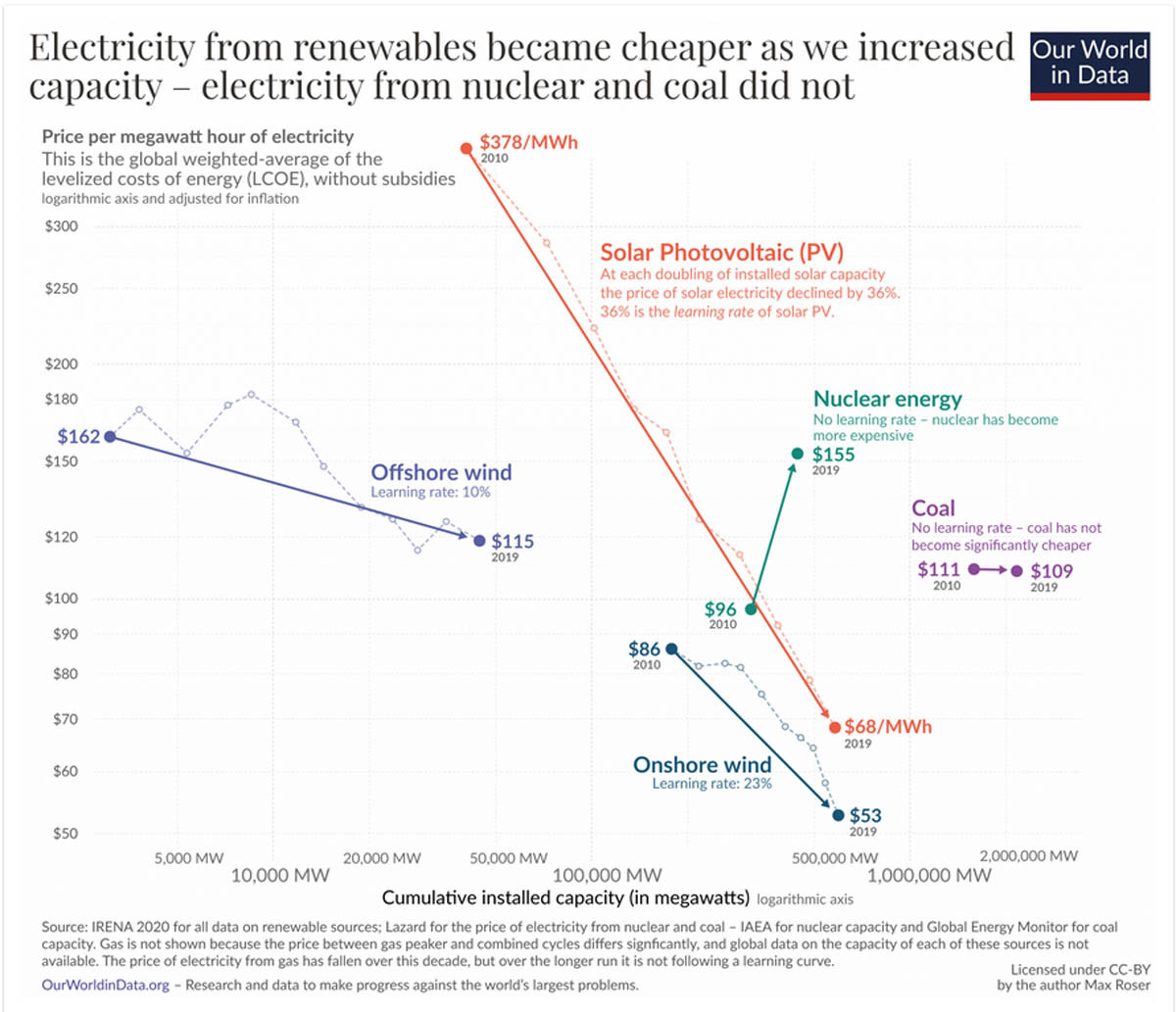
Disruption is rapid as soon as cost tipping points are crossed, and the growth of the new technology follows an S-curve rather than a linear progression, because feedback loops cause initial exponential growth of the new technology and exponential decline of the incumbent, which tails off as market saturation is reached. This has been proven for hundreds of products and technologies and is a very clear, predictable and evidence-based process. It is, however, incredibly unintuitive and this may be among the biggest obstacles to its widespread understanding.
It’s worth noting that new technologies don’t just take the incumbents’ market shares – they create a far bigger market because they’re both cheaper and more versatile. An era of super-cheap, abundant and clean energy, transport and food, that can not only halt climate change but also start repairing the damage already done, is imminent. The benefits and opportunities available to humanity will be staggering. So why isn’t everyone celebrating this?
One reason might be the established authorities producing realistic-looking, but actually ridiculously implausible, technology growth scenarios. These include the International Energy Administration (IEA), whose annual growth scenarios for solar energy have been ridiculed for years for being absurdly and repeatedly pessimistic when plotted against actual data. The same is true for EVs.
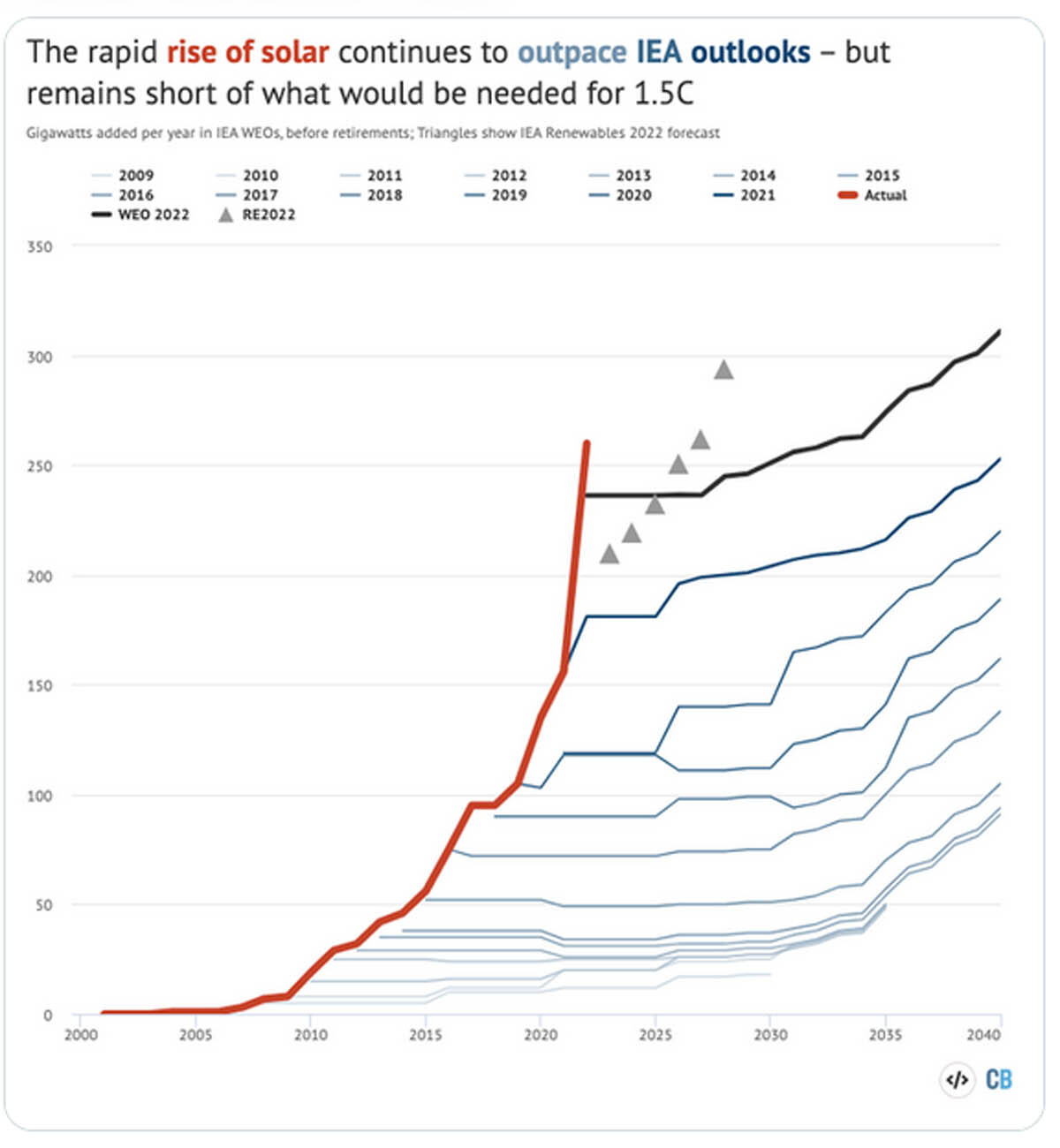
Another body whose techno-pessimism has proved unfounded is the International Panel on Climate Change (IPCC). Many of the best scientific minds in the world have modelled the impacts of global heating for the IPCC and the results are horrifying. But its low-carbon technology scenarios have been way off the mark. In its fifth assessment report, the IPCC’s most optimistic scenario (RCP2.6) assumes an installed renewable energy capacity in 2100 that is actually likely to be exceeded by 2030 – only 70 years early.
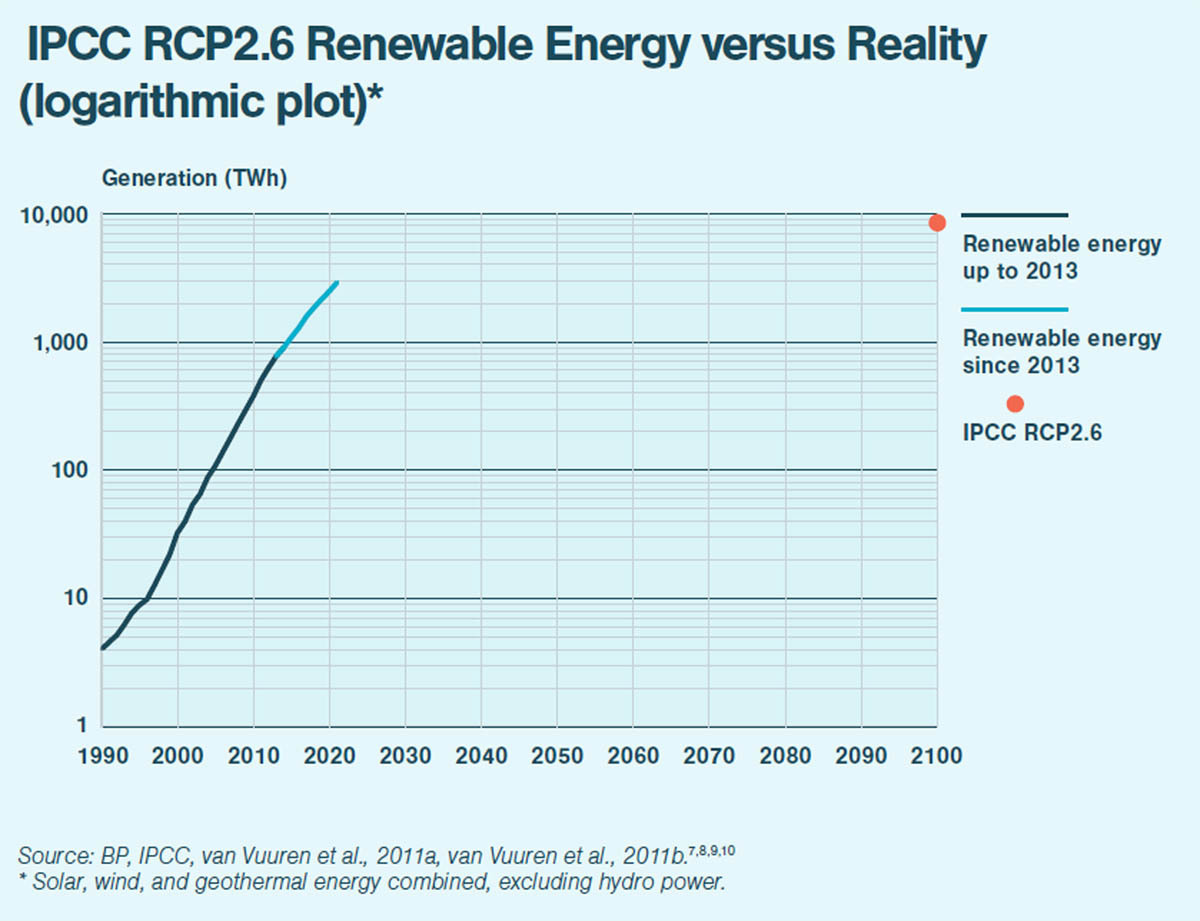
In its most recent, sixth report the IPCC acknowledges the rapid growth of low-carbon technology but – perhaps betraying some ignorance of the speed of historical step-changes – bases its best-case scenario (SSP1) on implausibly slow, linear and regulation-driven change. This is not to say that its climate science is at fault, but it does raise questions as to whether we should be looking to the IPCC for reliable forecasts of technological change.
In living memory, the environmental movement has had to deal with an economy powered by the fossil fuel industry without viable alternatives to disrupt it. So it may have seemed as if the only way forward was incremental reduction of economic activity and an emphasis on personal responsibility – with the latter being an especially motivating factor for more conscientious people. The instinct to rapidly withdraw from danger is entirely understandable, but this approach hasn’t worked, and individual efforts to emit less carbon won’t eliminate emissions or extract any carbon from the atmosphere.
This approach has also fostered the idea that economic activity is the cause of climate change, rather than the fossil fuels used to power current technology. This has led to the degrowth movement, which promotes reducing the size of the economy by up to 80 per cent to reduce consumption levels whilst maintaining quality of life. The movement has very desirable and widely shared aims but its assumptions are often misleading and the pathway it promotes is not being translated into meaningful or feasible policy.
Degrowth was tested by Covid lockdowns, which reduced the global economy by 3.5 per cent, carbon emissions by 5.4 per cent and global employment by 495 million, with the greatest impacts in poor countries. An 80 per cent economic contraction would be catastrophic. A strong economy is needed to pay for just the renewable energy transformation alone, which will cost an estimated $62 trillion dollars, but with only a six-year payback. Clearly, indefinite growth on a finite planet is not possible, but for now economic growth is our only hope of surviving and achieving sustainability.
Another common myth is that there aren’t enough mineral resources for a low-carbon transformation, when in reality there is no geological scarcity or supply chain limitations. Here too, the IEA’s future scenarios may be partly to blame. These assume a like-for-like technology transition instead of a transformation. This is like assuming in 1900 that a car was just a fast horse, or thinking in the 1990s that the internet would be just a quick postal service. If autonomous EVs do reduce car numbers by 90 per cent then the IEA’s EV mineral demand scenarios alone may be many times off the mark. Price rises of minerals mean recycling and circular economy options become desirable, while many minerals can just be substituted out – and indeed Tesla has recently got rid of rare-earth minerals in its new cars. This is why supply bottlenecks won’t derail the clean technology transformation.
The environmental harms and human rights issues involved in mining are very real concerns. However, the fossil fuel industry requires a staggering 535 times more mining than a clean technology transformation. Mining will become less carbon intensive as everything is electrified with wind and solar, but fossil fuel extraction is polluting by very definition.
Environmental protection and human rights aren’t cheap, but the increased prosperity resulting from new technologies, brought about by the clean energy transformation, will make finding solutions to these abuses more attainable. Political battles over issues like these will always need fighting, but to use them as a reason to halt the transformation in the face of climate change is catastrophically misguided.
Climate change aside, there are strong indications that the fossil fuel age is in its final decade in any case. A phenomenon called the ’net energy cliff’ shows that the energy required to extract and refine oil and gas increases as wells age, and in just over a decade there won’t be enough left-over oil and gas to maintain our economy. After this point, unless the renewable energy transformation is already well under way, imminent collapse will be guaranteed.
Our choice is stark and binary: we either collapse along with the fossil fuel age, or we leap forward into an optimistic and prosperous era of clean energy and abundance.
As we stand at the beginning of the most rapid and consequential technological transformation in history, our decisions, the stories we tell and the protests we organise couldn’t be more vital in securing a sustainable and vibrant future. We environmentalists claim to be the grown-ups in the room and people look to us for guidance and hope, so it has never been more important that we follow the science of technology disruptions and its experts as much as we follow the expertise of climate scientists. Doing so not only gives us real reasons for optimism – it also gives us powerful tools to enact the changes we need.
If we get it wrong we’ll look very foolish and even risk being facilitators of the fossil fuel industry’s destruction of our climate system. If we get it right then the future is very bright indeed.
End note: Much of my inspiration to learn about technology transformations stems from the think tank RethinkX. I strongly recommend reading their work. Adam Dorr, RethinkX’s research director, has recently published a new book, Brighter, and Hannah Ritchie, research director at Our World in Data, is publishing her new book, Not the End of the World, in January, both of which cover this topic in far greater detail.





